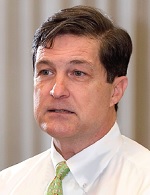Last fall, as Congress was trying to find a way to pay for a comprehensive transportation bill, it did something unusual: It looked to the Fed to close the financing gap. Lawmakers elected to transfer about $19 billion from the Fed's capital surplus account as well as reduce the dividend that the Fed pays to member banks, redirecting the money to the Treasury Department. Altogether, these changes will amount to $36 billion over five years.
This action set two new precedents: It mandated the first-ever cap on the size of the surplus account, requiring that any funds in excess of $10 billion be transferred to Treasury and used for the transportation bill. It also was the first congressional change to the formula the Fed has applied to its dividend payments to member banks since its founding in 1913. Under the traditional framework, member banks had to buy stock in their regional Reserve Bank equal to 3 percent of their capital and surplus (the "paid in" amount), while another 3 percent was "on call." Since this paid-in stock wasn't generating returns for member banks, the Fed paid an annual dividend of 6 percent. The new law, however, cuts the dividend for large banks from 6 percent to the annual yield of the 10-year Treasury note, which presently is below 2 percent.
When news of these changes broke, senior Fed officials rightly pointed out that the changes risked blurring the line between fiscal and monetary policy. Moreover, many observers have noted that the maneuvers were deceptive on an accounting level since they provide no net new revenue to the Treasury.
Beyond these issues, tinkering with the Fed's capital structure threatens to unravel the hybrid public-private governance framework that is so crucial to monetary policy independence. To understand why, we need to look back to how banking worked before the Fed was established in 1913, when banks formed clearinghouses in major cities to clear and settle payments. These clearinghouses served a public-private purpose: They managed the supply of currency and reserves in response to fluctuating needs, but they were owned and overseen by member banks, usually through an elected board of directors. They operated with a fair degree of independence, with member banks working jointly to ensure the model worked for all parties.
From the outset, the Fed-bank relationship was based on a similar hybrid model. The Fed's governance structure is partly public in that all members of the Board of Governors are appointed by the U.S. president, and three members of each Reserve Bank's nine-person board of directors are appointed by the Board. Moreover, Reserve Bank presidents must be approved by the Board after being selected by the local board of directors. But the governance structure is also partly private: Six out of the nine directors are elected by member banks, with three representing banks ("Class A") and three representing the public ("Class B"). All directors oversee many important Fed operational functions, but they also face restrictions meant to prevent conflicts of interest. For example, directors have no role in the oversight of bank supervisory or regulatory decisions, and Class A directors representing banks no longer play a role in the appointment of Reserve Bank presidents, a change enacted in the 2010 Dodd-Frank reform.
This hybrid governance model has come to play an important role in the independence of monetary policy. The nature of our political system — with a high frequency election cycle — makes it natural for elected officials to weight short-run gains more heavily than long-run costs. This can lead to a preference for monetary policy actions that boost employment over those that contain inflation. Yet history shows that once higher inflation has set in, it is difficult and costly to bring it down. Political independence allows monetary policy to place greater weight on the long-term benefits of low and stable inflation.
So what does it mean now that the larger member banks will get a reduced dividend? Some banks have already broached the possibility of discontinuing their Fed memberships. Meanwhile, a proposal is circulating in Congress that would reduce the "paid in" requirement. Whether banks leave or stay and pay in less capital, this change could lead some to argue that banks' role in Fed governance be reduced or eliminated. This would dovetail with proposals to reduce the private aspects of the Fed's public-private governance structure — for example, that Reserve Bank leadership be appointed by the U.S. president.
This would be a grave mistake, in my view. The current Fed governance structure may not be ideal. But until there is a proposal that preserves the monetary policy independence that is so vital to the Fed's mandate, we should stick to what we have.




